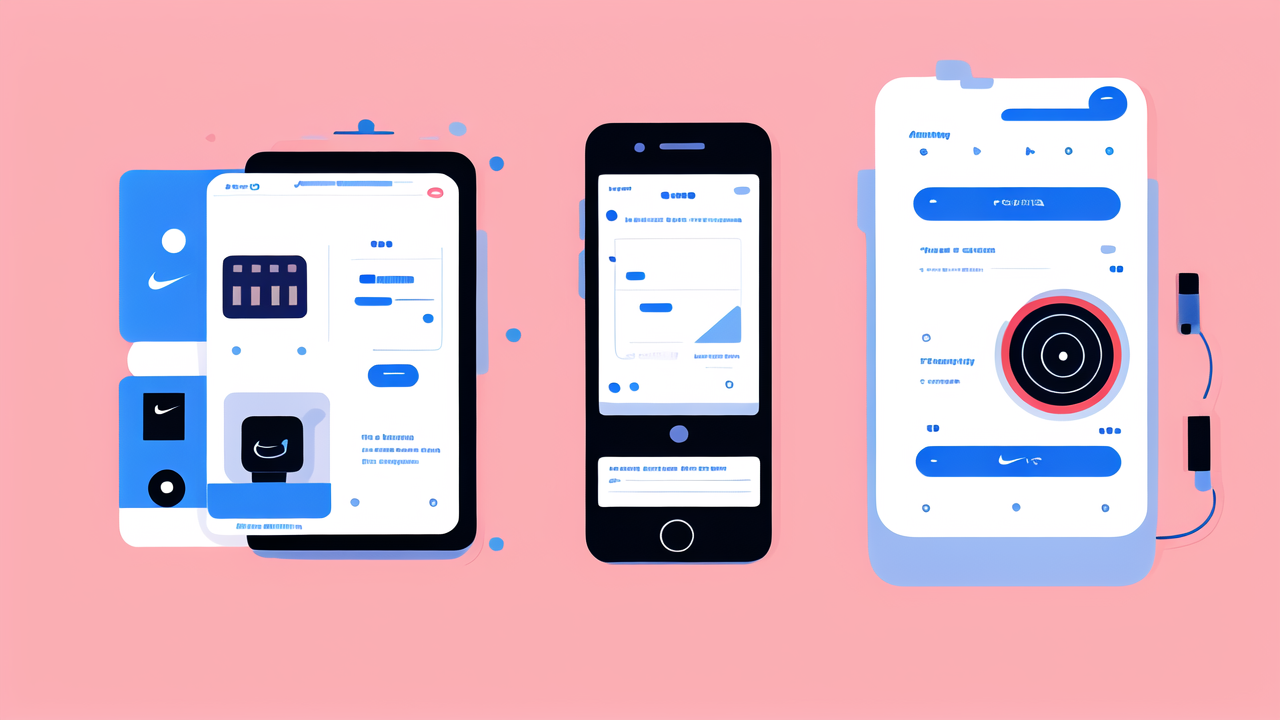The Evolution of Fitness Wearables in the United States Market
From Fitness Bands to Smart Clothing: A Brief History
Fitness wearables have come a long way in the US market. They started as simple step counters. Then came fitness bands like Fitbit. These tracked steps, heart rate, and sleep patterns.

As tech improved, smartwatches entered the scene. Apple Watch and Samsung Galaxy Watch gained popularity. They added more features like GPS and mobile payments.
Now, we're seeing the rise of smart clothing. These are regular clothes with built-in tech. They can track more data and offer better comfort. Brands like Under Armour and Nike are leading this trend.
The shift shows how fitness tech is becoming more seamless in our daily lives. It's no longer just about devices. It's about integrating tech into what we already wear.
Key Technologies Shaping the Future of Fitness Wearables
Several key technologies are driving the future of fitness wearables:
- Advanced sensors: These can track more health metrics with greater accuracy.
- Artificial Intelligence (AI): AI helps analyze data and provide personalized insights.
- Flexible electronics: These allow for more comfortable and durable smart clothing.
- Improved battery tech: Longer battery life means wearables can be used for extended periods.
- 5G connectivity: Faster data transfer enables real-time monitoring and feedback.
These technologies are making wearables more useful and user-friendly. They're also opening up new possibilities for health monitoring and fitness tracking.
As these techs advance, we can expect even more innovative products in the future. The line between clothing and tech will continue to blur.
Regulatory Landscape and Consumer Protection for Wearables
The US has regulations to ensure wearables are safe and protect user data. The FDA oversees medical wearables. They ensure these devices are accurate and safe for health monitoring.
The FTC protects consumers from false advertising claims. They make sure companies are honest about what their wearables can do.
Data privacy is a big concern. Laws like CCPA in California give users more control over their data. Companies must be transparent about data collection and use.
There's ongoing debate about how to regulate newer smart clothing. As tech evolves, laws may need to change too.
Consumers should stay informed about their rights. They should read privacy policies and understand how their data is used.
Fila Pulse: Blending Fashion with Fitness Technology
Understanding the Fila Pulse Concept
Fila Pulse is Fila's venture into smart clothing. It combines Fila's fashion expertise with cutting-edge fitness tech.

The concept is simple: create stylish clothes that also track fitness data. Fila Pulse items look like normal Fila gear. But they have hidden sensors and tech features.
This approach appeals to those who want fitness tracking without obvious gadgets. It's for people who care about both style and health.
Fila Pulse covers various product types. These include shirts, shoes, and accessories. Each item is designed to seamlessly integrate tech into daily wear.
The goal is to make fitness tracking a natural part of getting dressed. It's about making tech invisible yet functional.
Technological Innovations in Fila Pulse Products
Fila Pulse products use several innovative technologies:
- Embedded sensors: These track heart rate, body temperature, and movement.
- Conductive fabrics: These allow for seamless integration of electronics into clothing.
- Washable electronics: This ensures the tech components can withstand regular washing.
- Bluetooth connectivity: This enables easy data sync with smartphones.
- Energy harvesting: Some products use body heat or movement to power sensors.
These innovations allow Fila Pulse to offer advanced tracking in comfortable, stylish clothing. The tech is designed to be unobtrusive and long-lasting.
Fila continues to research new materials and tech. They aim to make their smart clothing even more advanced and user-friendly.
The Impact of Fila Pulse on Athletic Performance and Lifestyle
Fila Pulse is changing how people approach fitness and daily life. Athletes use it to fine-tune their training. They get detailed data on performance without bulky devices.
For everyday users, Fila Pulse makes health tracking effortless. It encourages more active lifestyles. Users can monitor their activity without changing their routine.
The fashion aspect is key. People are more likely to use tech that looks good. Fila Pulse makes fitness tracking a style statement.
In team sports, coaches use Fila Pulse to monitor players' conditions. This helps prevent injuries and optimize training.
Overall, Fila Pulse is bridging the gap between fashion, fitness, and technology. It's making health monitoring a seamless part of daily life.
Challenges and Opportunities in the Smart Clothing Industry
Addressing the Challenges of Integration and Compatibility
Smart clothing faces several integration challenges. One is balancing tech features with comfort and style. Electronics must be small and flexible enough to be wearable.

Durability is another issue. Smart clothes need to withstand washing and daily wear. This requires special materials and design techniques.
Compatibility is a big concern. Smart clothes should work with various devices and apps. Creating universal standards is crucial for widespread adoption.
Battery life remains a challenge. Smart clothes need power sources that are light, long-lasting, and safe.
Data privacy and security are ongoing issues. As clothes collect more data, protecting this information becomes vital.
Overcoming these challenges requires collaboration. Fashion designers, tech experts, and material scientists must work together.
Opportunities in the US Market for Fitness-Focused Fashion Brands
The US market offers great opportunities for fitness-focused fashion brands. There's growing interest in health and wellness. This creates demand for innovative fitness products.
The athleisure trend is still strong. People want clothes that are both functional and stylish. Smart clothing fits this need perfectly.
There's potential in specialized markets. For example, smart clothing for specific sports or medical monitoring.
Personalization is a big opportunity. Brands can offer custom-fit smart clothes with tailored features.
Sustainability is another area of interest. Eco-friendly smart clothing could appeal to environmentally conscious consumers.
Partnerships with tech companies or fitness apps can create new opportunities. These collaborations can lead to more integrated fitness ecosystems.
Future Trends and Predictions for Smart Clothing in the Fitness Arena
Several trends are shaping the future of smart clothing in fitness:
- More advanced health monitoring: Future smart clothes may detect early signs of illness.
- AI-powered coaching: Clothes could provide real-time workout advice based on body data.
- Social connectivity: Sharing fitness data through clothing could become more common.
- Enhanced performance fabrics: New materials could actively help improve athletic performance.
- Integration with virtual reality: Smart clothes might connect with VR for immersive workouts.
We can expect smart clothing to become more mainstream. As tech improves and prices drop, more people will adopt these products.
The line between regular clothes and smart clothes will blur. Eventually, most activewear might have some "smart" features.
Overall, smart clothing is set to revolutionize how we approach fitness and health monitoring. It's an exciting time for both fashion and technology.




Leave a comment
This site is protected by hCaptcha and the hCaptcha Privacy Policy and Terms of Service apply.